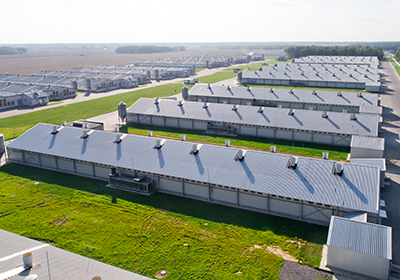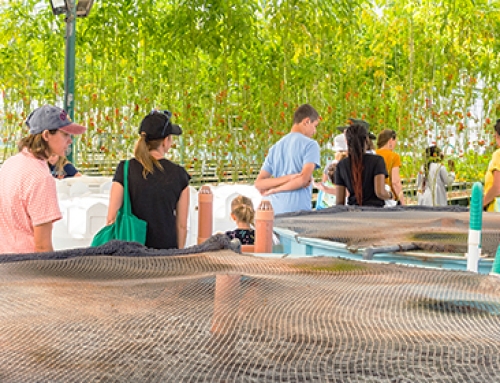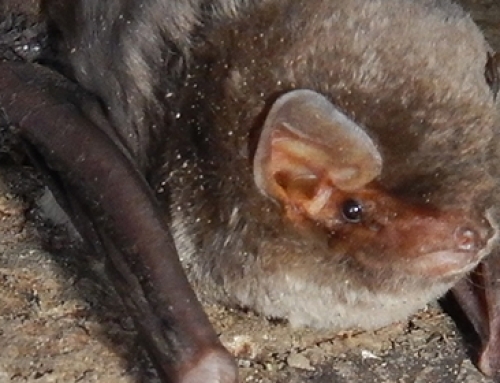The availability of adequate methods for molecular differentiation of Mycoplasma gallisepticum strains is pivotal to understanding the dynamics behind its spread in poultry farms and thus to obtaining information required to control epidemics caused by this species of mycoplasma. Specifically, the use of molecular typing by Multilocus Sequence Typing enables M. gallisepticum strains isolated in poultry samples to be differentiated, describing genetic relationships, and distinguishing field isolates from vaccine strains.
This has been demonstrated in a research study conducted by the Mycoplasma Unit of the Istituto Zooprofilattico Sperimentale delle Venezie (IZSVe), which analysed the results of two genotyping techniques available for M. gallisepticum: mgc2-Gene Targeted Sequencing (mgc2-GTS) and Multilocus Sequence Typing (MLST). Both methods were tested on the same sample set, i.e. 40 isolates from Italian industrial and rural poultry farms affected by mycoplasmosis between 2010 and 2019. The researchers then compared the findings, which have recently been published in the international scientific journal, Vaccines.
Vaccination and typing of Mycoplasma gallisepticum

Mycoplasma gallisepticum is one of the mycoplasma species that exerts the greatest impact on the poultry sector. In Italy, two types of vaccine are authorized for M. gallisepticum, both based on attenuated live strains of the pathogen, namely 6/85 and ts-11. Molecular typing techniques thus become instrumental in differentiating between vaccine strains and strains that can spread following an outbreak.
Mycoplasma gallisepticum is one of the mycoplasma species that exerts the greatest impact on the poultry sector. It affects animals’ respiratory system, causing inflammation of the air sacs and contributing to the onset of chronic respiratory diseases (CRD). The pathogen generates significant economic losses for the poultry industry, due to embryo death, retarded growth, an increase in carcass condemnation, and consequently reduced meat and egg production.
M. gallisepticum can be transmitted both vertically, from the parent to the progeny through egg deposition, and horizontally, through direct contact among animals, or by airborne or dust contamination. To contain its spread within the industry, it is thus essential to keep breeder groups pathogen free
Implementation of strictlybiosecurity measures is the best way to prevent the spread of the infection. However, in some cases and in specific epidemiological settings, vaccination can also be undertaken. Antibiotic treatments are instead ineffective since they can attenuate the symptoms but are not sufficient to eradicate the disease.
In Italy, two types of vaccine are authorized for M. gallisepticum, both based on attenuated live strains of the pathogen, namely 6/85 and ts-11. The former type is authorized for layer hens only, while the latter is also used in breeders. Using these vaccines for preventive purposes does, however, hinder diagnosis in the event of an outbreak since laboratory analyses cannot distinguish vaccine strains from field isolates. Molecular typing techniques thus become instrumental in differentiating between vaccine strains and strains that can spread following an outbreak.
Comparing mgc2-GTS and MLST genotyping techniques

Researchers from IZSVe conducted a study to compare two genotyping techniques developed for M. gallisepticum, mgc2-GTS and MLST. According to the IZSVe researchers’ findings, the mgc2-GTS technique ensures identification of the 6/85 vaccine strain but not of the ts-11 strains, at least the ones circulating in Italy. Conversely, besides identifying both vaccine strains, the MLST technique differentiates the strains and describes in more detail the relations among them.
Based on this assumpitions, researchers from IZSVe conducted a study to compare two genotyping techniques developed for M. gallisepticum, mgc2-GTS and MLST:
- the mgc2-GTS technique identifies the pathogen’s genotype based on the nucleotide sequence of genes encoding the bacteria surface proteins, specifically the one encoding cythadhesin mgc2. This protein contributes to the mechanism by which the pathogen binds to the host’s receptors. The technique is adopted because it is sufficiently sensitive and easy to reproduce, but provides only limited inter-strain differentiation;
- the MLST technique identifies the genotype by sequencing a set of bacterial housekeeping genes based on a standardized international protocol and on comparison with data deposited in a shared repository, which is continuously updated by all laboratories using the protocol.
According to the IZSVe researchers’ findings, the mgc2-GTS technique ensures identification of the 6/85 vaccine strain but not of the ts-11 strains, at least the ones circulating in Italy. Hence, it cannot always differentiate this vaccine strain from certain field isolates in cases of positive diagnosis. Conversely, besides identifying both vaccine strains, the MLST technique differentiates the strains and describes in more detail the relations among them.
While the researchers were able to identify 6 different genotypes of M. gallisepticum in the analysed samples using the mgc2-GTS technique, the MLST method allowed the detection of as many as 23 different sequence types (ST), some of which can be clustered by genetic alignment (clonal complexes, CC). Of these 23 genotypes, 9 had previously been published, whereas 14 were identified and entered in the shared database for the first time.
From genotyping to epidemiological information

By analyzing the relations between the genotypes identified by MLST, their clustering, and data related to time and place of sample collection, the researchers were able to unravel some interesting epidemiological dynamics.
By analyzing the relations between the genotypes identified by MLST, their clustering, and data related to time and place of sample collection, the researchers were able to unravel some interesting epidemiological dynamics, as for example:
- the spread of a specific genotype (ST27) from one farm to the surrounding area,
- the peak in the spread of another genotype (ST34) in various farms during the two-year period 2013-2014,
- the recent introduction into Italy of new genotypes belonging to the same group (CC3).
The results of the MLST technique revealed that the number of different genotypes peaked in 2013 and began to decline in 2015. Moreover, starting from 2014, there was a decrease in the number of outbreaks and thus of isolated mycoplasmas (11 in the period 2014-2019), whereas the number of identified but previously undescribed genotypes rose (8 of the 11 mycoplasmas isolated in the period were new genotypes).
According to the researchers, these trends were due to the reinforcement of biosecurity measures at the studied farms to address other health-related issues occurring at the same time, as avian influenza epidemics or eggshell apex abnormalities, caused by an other mycoplasma species present in the poultry industry.
Read the scientific article on Vaccines »






